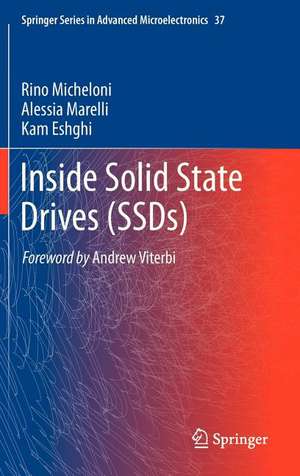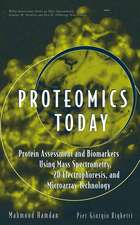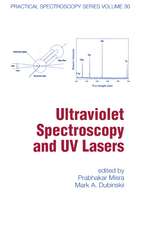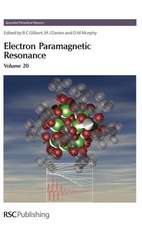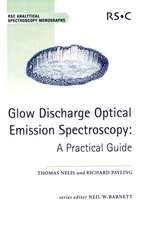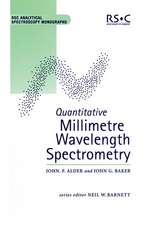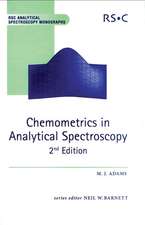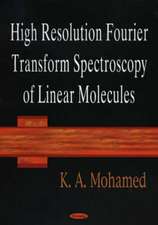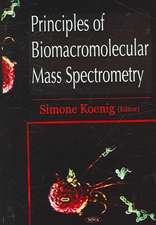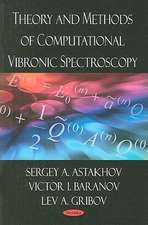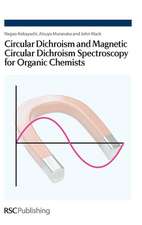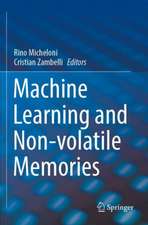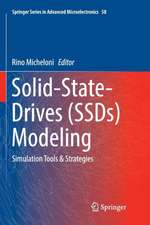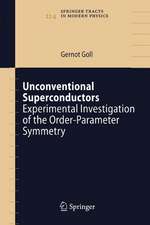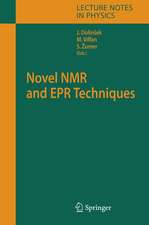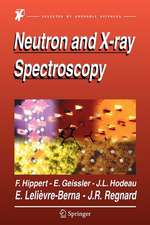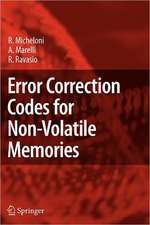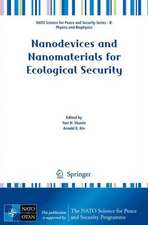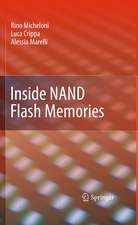Inside Solid State Drives (SSDs): Springer Series in Advanced Microelectronics, cartea 37
Autor Rino Micheloni, Alessia Marelli, Kam Eshghien Limba Engleză Hardback – 15 oct 2012
In client applications, small mobile platforms are leaving little room for batteries while demanding long life out of them. Therefore, reducing both idle and active power consumption has become critical. Additionally, client storage systems are in need of significant performance improvement as well as supporting small robust form factors. Ultimately, client systems are optimizing for best performance/power ratio as well as performance/cost ratio.
SSDs promise to address both enterprise and client storage requirements by drastically improving performance while at the same time reducing power.
Inside Solid State Drives walks the reader through all the main topics related to SSDs: from NAND Flash to memory controller (hardware and software), from I/O interfaces (PCIe/SAS/SATA) to reliability, from error correction codes (BCH and LDPC) to encryption, from Flash signal processing to hybrid storage. We hope you enjoy this tour inside Solid State Drives.
| Toate formatele și edițiile | Preț | Express |
|---|---|---|
| Paperback (1) | 951.20 lei 38-44 zile | |
| Springer Nature Singapore – 23 dec 2018 | 951.20 lei 38-44 zile | |
| Hardback (2) | 904.05 lei 38-44 zile | |
| SPRINGER NETHERLANDS – 15 oct 2012 | 904.05 lei 38-44 zile | |
| Springer Nature Singapore – 23 iul 2018 | 967.29 lei 38-44 zile |
Din seria Springer Series in Advanced Microelectronics
- 23%
 Preț: 614.93 lei
Preț: 614.93 lei - 15%
 Preț: 627.29 lei
Preț: 627.29 lei - 20%
 Preț: 626.83 lei
Preț: 626.83 lei - 18%
 Preț: 978.42 lei
Preț: 978.42 lei - 15%
 Preț: 624.92 lei
Preț: 624.92 lei - 18%
 Preț: 1199.30 lei
Preț: 1199.30 lei - 15%
 Preț: 622.67 lei
Preț: 622.67 lei - 18%
 Preț: 927.07 lei
Preț: 927.07 lei - 15%
 Preț: 622.84 lei
Preț: 622.84 lei - 18%
 Preț: 1789.91 lei
Preț: 1789.91 lei - 18%
 Preț: 1021.78 lei
Preț: 1021.78 lei - 18%
 Preț: 928.27 lei
Preț: 928.27 lei - 18%
 Preț: 926.46 lei
Preț: 926.46 lei - 15%
 Preț: 619.96 lei
Preț: 619.96 lei - 18%
 Preț: 1078.67 lei
Preț: 1078.67 lei -
 Preț: 376.18 lei
Preț: 376.18 lei - 15%
 Preț: 624.28 lei
Preț: 624.28 lei - 18%
 Preț: 929.36 lei
Preț: 929.36 lei - 15%
 Preț: 623.65 lei
Preț: 623.65 lei - 18%
 Preț: 920.17 lei
Preț: 920.17 lei - 18%
 Preț: 928.44 lei
Preț: 928.44 lei - 15%
 Preț: 614.59 lei
Preț: 614.59 lei - 18%
 Preț: 910.07 lei
Preț: 910.07 lei - 18%
 Preț: 919.68 lei
Preț: 919.68 lei - 18%
 Preț: 1514.95 lei
Preț: 1514.95 lei - 15%
 Preț: 615.38 lei
Preț: 615.38 lei - 18%
 Preț: 919.38 lei
Preț: 919.38 lei
Preț: 904.05 lei
Preț vechi: 1189.53 lei
-24% Nou
Puncte Express: 1356
Preț estimativ în valută:
173.03€ • 180.34$ • 144.04£
173.03€ • 180.34$ • 144.04£
Carte tipărită la comandă
Livrare economică 31 decembrie 24 - 06 ianuarie 25
Preluare comenzi: 021 569.72.76
Specificații
ISBN-13: 9789400751453
ISBN-10: 9400751451
Pagini: 400
Ilustrații: XVIII, 382 p.
Dimensiuni: 155 x 235 x 27 mm
Greutate: 0.74 kg
Ediția:2013
Editura: SPRINGER NETHERLANDS
Colecția Springer
Seria Springer Series in Advanced Microelectronics
Locul publicării:Dordrecht, Netherlands
ISBN-10: 9400751451
Pagini: 400
Ilustrații: XVIII, 382 p.
Dimensiuni: 155 x 235 x 27 mm
Greutate: 0.74 kg
Ediția:2013
Editura: SPRINGER NETHERLANDS
Colecția Springer
Seria Springer Series in Advanced Microelectronics
Locul publicării:Dordrecht, Netherlands
Public țintă
ResearchCuprins
Preface.- Foreword.- Acknowledgements.- About the editors.- 1. SSD market overview.- 2. SSD Architecture and PCI Express interface.- 3. SAS and SATA SSDs.- 4. Hybrid storage.- 5. NAND Flash technology.- 6. NAND Flash design.- 7. NAND & Controller co-design for SSDs.- 8. SSD reliability.- 9. Efficient wear leveling in NAND Flash memory.- 10. BCH for Solid-State-Drives.- 11. Low-Density Parity-Check (LDPC) codes.- 12. Protecting SSD data against attacks.- 13. Flash Signal Processing and NAND/ReRAM SSD.- Index.-
Recenzii
From the reviews:
Selected by Computing Reviews as one of the Best Reviews & Notable Books of 2013
“This collection of chapters written by many different authors aims to enlighten the reader on all aspects of SSDs. … if you are interested in how SSDs really work, this may be the book you are looking for.” (Bernard Kuc, Computing Reviews, July, 2013)
“Detailed book on SSD architecture suitable for new SSD hardware designers, firmware engineers who want to get up to speed quickly. The book offers a systematic overview starting with how HDD differ from SSDs, how NAND arrays operate, how SATA, SAS, PCIe SSDs differ, how supercaps differ from tantalum caps. … Unique features: Overview of hybrid SSDs, math behind BCH codes.” (R. Prakash, Amazon.com, July, 2013)
Selected by Computing Reviews as one of the Best Reviews & Notable Books of 2013
“This collection of chapters written by many different authors aims to enlighten the reader on all aspects of SSDs. … if you are interested in how SSDs really work, this may be the book you are looking for.” (Bernard Kuc, Computing Reviews, July, 2013)
“Detailed book on SSD architecture suitable for new SSD hardware designers, firmware engineers who want to get up to speed quickly. The book offers a systematic overview starting with how HDD differ from SSDs, how NAND arrays operate, how SATA, SAS, PCIe SSDs differ, how supercaps differ from tantalum caps. … Unique features: Overview of hybrid SSDs, math behind BCH codes.” (R. Prakash, Amazon.com, July, 2013)
Notă biografică
Rino Micheloni (rino.micheloni@ieee.org) is Lead Flash Technologist at IDT (Integrated Device Technology). He has 18 years experience in NAND/NOR Flash memory design, architecture and algorithms as well as the related intellectual property. Before IDT, he was Senior Principal for Flash and Director of Qimonda's design center in Italy, developing 36 nm and 48 nm NAND memories. From 2001 to 2006 he managed the Napoli design center of STMicroelectronics focusing on the development of 90 nm and 60 nm MLC NAND Flash. Before that, he led the development of MLC NOR Flash. He is co-author of 103 U.S. patents and five Springer books on NOR/NAND/ECC/SSD. He is IEEE Senior Member and received the STMicroelectronics Exceptional Patent in 2003 and 2004, and the Qimonda IP Award in 2007.
Alessia Marelli was born in Bergamo, Italy in 1980. She received her degree in Mathematical Science from “Università degli Studi di Milano – Bicocca”, Italy in 2003 with a thesis about ECC applied to Flash Memories. In 2003 she joined STMicroelectronics, Agrate B., Italy. She was involved in digital design of Multilevel NAND Memories, especially redundancy, ECC and algorithms. In 2007, she joined Qimonda as senior digital designer. In 2009 she joined Integrated Device Technology (IDT) as senior digital designer, where she takes care of ECC applied to SSD. She is co-author of some patents regarding Redundancy and ECC applied to Flash Memories. She is co-author of Memories in Wireless Systems (Springer, 2008), Error Correction Codes for Non-Volatile Memories (Springer, 2008), Inside NAND Flash Memories (Springer, 2010).
Kam Eshghi is Sr. Director of Marketing in Enterprise Computing Division of IDT. Kam leads IDT’s business strategy, marketing and business development for flash controllers and PCIe switches. Kam drove the creation of IDT’s PCIe Enterprise Flash Controller product line andestablished IDT as a leader in this market.
Kam has more than 18 years of industry experience. Prior to joining IDT, Kam built product lines in server and networking markets at HP, Intel, Crosslayer Networks, and Synopsys. During his time at Intel, Kam led a team to define strategy and product roadmaps for server chipsets. Previous to that as Vice President of Marketing and Business Development at Crosslayer Networks, Kam defined a family of Ethernet-IP switch processors and led all customer engagements, ultimately leading to LSI’s acquisition.
Kam holds a M.S. in Electrical Engineering & Computer Science from Massachusetts Institute of Technology, and a Master’s in Business Administration and B.S. in Electrical Engineering & Computer Science both from University of California at Berkeley.
Alessia Marelli was born in Bergamo, Italy in 1980. She received her degree in Mathematical Science from “Università degli Studi di Milano – Bicocca”, Italy in 2003 with a thesis about ECC applied to Flash Memories. In 2003 she joined STMicroelectronics, Agrate B., Italy. She was involved in digital design of Multilevel NAND Memories, especially redundancy, ECC and algorithms. In 2007, she joined Qimonda as senior digital designer. In 2009 she joined Integrated Device Technology (IDT) as senior digital designer, where she takes care of ECC applied to SSD. She is co-author of some patents regarding Redundancy and ECC applied to Flash Memories. She is co-author of Memories in Wireless Systems (Springer, 2008), Error Correction Codes for Non-Volatile Memories (Springer, 2008), Inside NAND Flash Memories (Springer, 2010).
Kam Eshghi is Sr. Director of Marketing in Enterprise Computing Division of IDT. Kam leads IDT’s business strategy, marketing and business development for flash controllers and PCIe switches. Kam drove the creation of IDT’s PCIe Enterprise Flash Controller product line andestablished IDT as a leader in this market.
Kam has more than 18 years of industry experience. Prior to joining IDT, Kam built product lines in server and networking markets at HP, Intel, Crosslayer Networks, and Synopsys. During his time at Intel, Kam led a team to define strategy and product roadmaps for server chipsets. Previous to that as Vice President of Marketing and Business Development at Crosslayer Networks, Kam defined a family of Ethernet-IP switch processors and led all customer engagements, ultimately leading to LSI’s acquisition.
Kam holds a M.S. in Electrical Engineering & Computer Science from Massachusetts Institute of Technology, and a Master’s in Business Administration and B.S. in Electrical Engineering & Computer Science both from University of California at Berkeley.
Textul de pe ultima copertă
Solid State Drives (SSDs) are gaining momentum in enterprise and client applications, replacing Hard Disk Drives (HDDs) by offering higher performance and lower power. In the enterprise, developers of data center server and storage systems have seen CPU performance growing exponentially for the past two decades, while HDD performance has improved linearly for the same period. Additionally, multi-core CPU designs and virtualization have increased randomness of storage I/Os. These trends have shifted performance bottlenecks to enterprise storage systems. Business critical applications such as online transaction processing, financial data processing and database mining are increasingly limited by storage performance.
In client applications, small mobile platforms are leaving little room for batteries while demanding long life out of them. Therefore, reducing both idle and active power consumption has become critical. Additionally, client storage systems are in need of significant performance improvement as well as supporting small robust form factors. Ultimately, client systems are optimizing for best performance/power ratio as well as performance/cost ratio.
SSDs promise to address both enterprise and client storage requirements by drastically improving performance while at the same time reducing power.
Inside Solid State Drives walks the reader through all the main topics related to SSDs: from NAND Flash to memory controller (hardware and software), from I/O interfaces (PCIe/SAS/SATA) to reliability, from errror correction codes (BCH and LDPC) to encryption, from Flash signal processing to hybrid storage. We hope you enjoy this tour inside Solid State Drives.
In client applications, small mobile platforms are leaving little room for batteries while demanding long life out of them. Therefore, reducing both idle and active power consumption has become critical. Additionally, client storage systems are in need of significant performance improvement as well as supporting small robust form factors. Ultimately, client systems are optimizing for best performance/power ratio as well as performance/cost ratio.
SSDs promise to address both enterprise and client storage requirements by drastically improving performance while at the same time reducing power.
Inside Solid State Drives walks the reader through all the main topics related to SSDs: from NAND Flash to memory controller (hardware and software), from I/O interfaces (PCIe/SAS/SATA) to reliability, from errror correction codes (BCH and LDPC) to encryption, from Flash signal processing to hybrid storage. We hope you enjoy this tour inside Solid State Drives.
Caracteristici
Highlighted are all different aspects required by Solid State Disk design, including interfaces (PCIe, SAS, SATA, USB) Shows real benefits of SSDs, application by application Applicable to researchers, academics and professionals Includes supplementary material: sn.pub/extras
